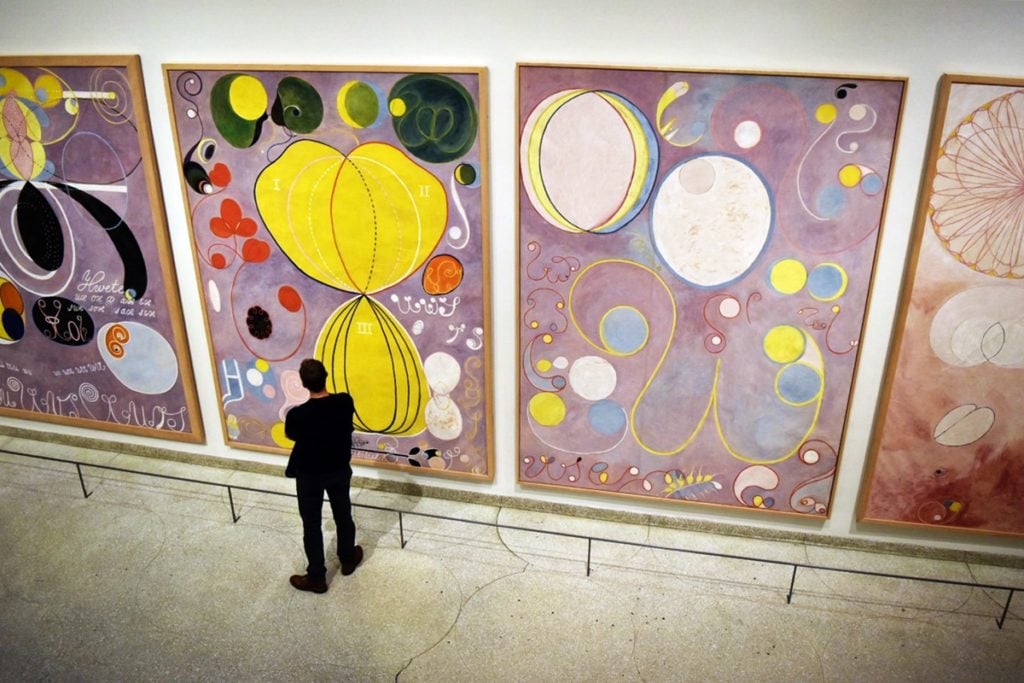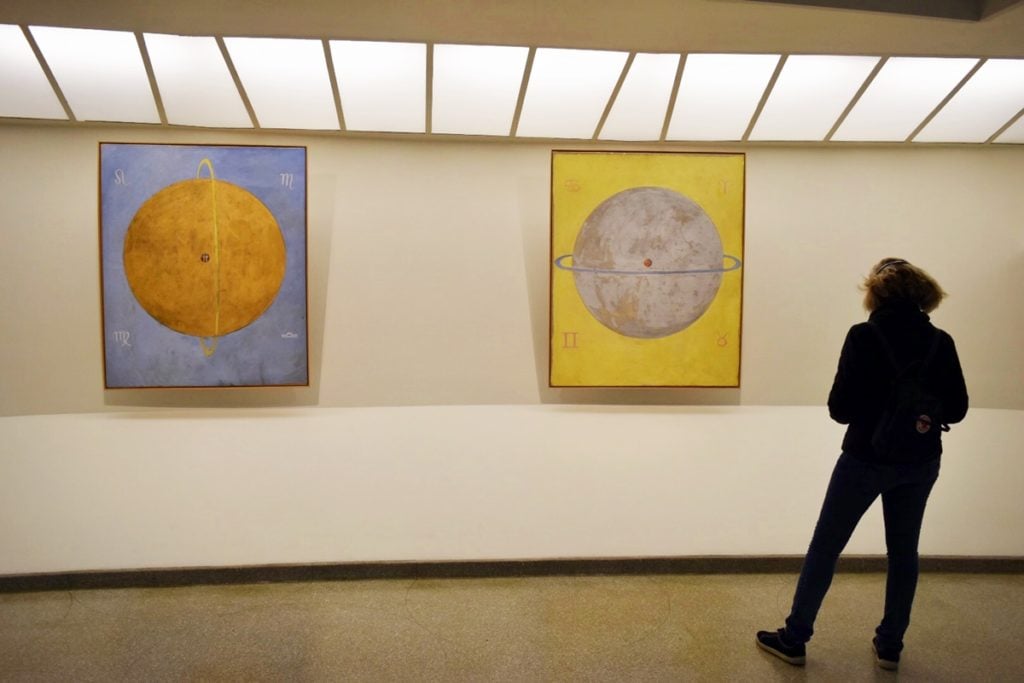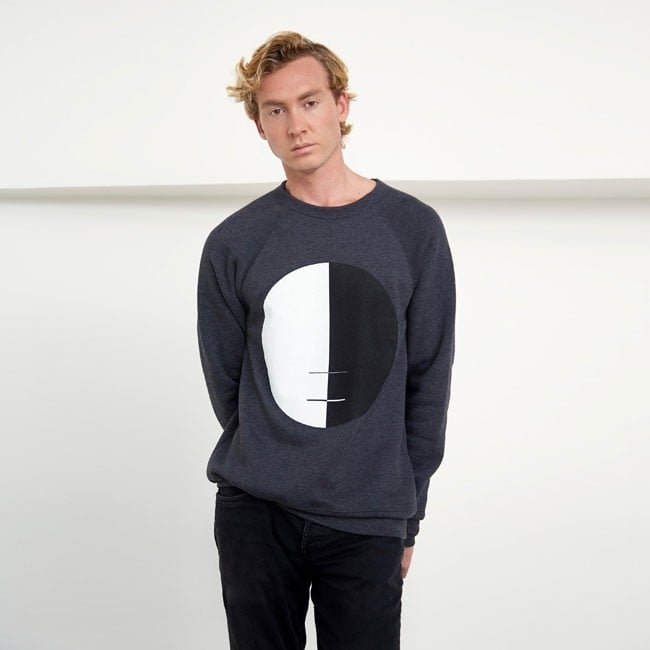Art & Exhibitions
Here’s How the Hilma af Klint Show Played Perfectly Into the Current Zeitgeist to Become the Guggenheim’s Most-Visited Exhibition Ever
The show made history with more than 600,000 visitors.

The show made history with more than 600,000 visitors.

With four days to go until the closing of “Hilma af Klint: Paintings for the Future” at the Guggenheim, the New York museum has announced that the show has already become its most-attended exhibition of all time. More than 600,000 visitors have come to see the Tracey Bashkoff-curated survey of the Swedish mystic painter.
For comparison, last year’s Giacometti show at the Guggenheim drew half that number of visitors, according to the Art Newspaper, with a little over 314,000, a total that put it in the top 10 most-visited museum shows for the “Impressionist and Modern” category worldwide. To be fair, the Hilma af Klint blockbuster has had a much longer run (October to April, instead of Giacometti’s three-month June to September run). It has also benefited from the Guggenheim’s decision to throw its doors open seven days a week to celebrate its 60th anniversary at the beginning of 2019.
Still, the record-smashing attendance numbers are a remarkable feat for an artist who until very recently was an outsider to the mainstream canon of art. Just six years ago, af Klint’s prescient abstract art was not even mentioned in the Museum of Modern Art’s “Inventing Abstraction: 1910–1925.” So what accounts for the show’s popularity?
Af Klint’s lush, cryptic paintings have been almost universally praised by critics as a breath of fresh air. And, at a time when personal narrative is more important than ever in terms of how audiences engage with art, she also has a compelling biography (though the timeline of her life is, in truth, still filled with enigmas). Born in 1862, af Klint turned to spiritualism after the loss of her sister. Working with a group of women called the Five, she committed herself in near-secret to an epic cycle of mediumistically inspired abstract paintings—only to be nearly forgotten and then discovered by a new generation.

Installation view of Hilma af Klint’s “The Dove” paintings. Image courtesy Ben Davis.
The artist’s work is resonant with the long-celebrated styles of more famous male artists like Wassily Kandinsky and Piet Mondrian, but also stemmed from female-centered spiritualist spaces. The show thus reads as a satisfying feminist expansion of the art canon. In some ways, the unexpected drawing power of “Paintings for the Future” feels like the museum blockbuster equivalent of recent movie blockbusters like Wonder Woman, Black Panther, and Crazy Rich Asians. Like them, its commercial and critical success will almost certainly inspire new directions for future programming.
The af Klint show has also benefited from its connections beyond the typical art audience. Witchcraft has been trending in popular culture in recent years. The Swedish artist may not have been widely taught in art history courses, but her work has a large presence in contemporary occult communities (in the 2016 indie film Personal Shopper, Kristen Stewart’s character discovers af Klint’s paintings, inspiring her to attempt to communicate with her dead brother). During the Guggenheim show, devotees have even offered free “psychic tours” where visitors are taught to “practice receiving spirit messages through select paintings as a group.”
Attempts by the likes of Sephora and Urban Outfitters to cash in on the demand for witch-themed lifestyle products have provoked backlash. For its part, the Guggenheim eagerly took the opportunity to merchandise, with a very successful “Hilma af Klint Capsule Collection.” During the run of the show, af Klint-themed products have accounted for some 42 percent of sales at the Guggenheim store, according to the museum.

The “Buddha Pullover Sweatshirt, Grey with Black & White Circle,” on male model. Image courtesy Guggenheim Store.
Offerings range from a $42 Hilma af Klint Watch, featuring one of her circular, diagram-like black-and-white paintings; to a $310 hand-painted Eye Altarpiece; to the $360 cotton Hilma Radial Kimono.
The “Paintings for the Future” catalogue has also set a record, selling more than 30,000 copies. That total surpassed the previous record-holder, the 2009 catalogue for af Klint’s fellow spiritual-abstractionist, Kandinsky.
For the remainder of the show’s run, the Guggenheim has extended its hours until 8 p.m. to accommodate the crowds.
“Hilma af Klint: Paintings for the Future” is on view at the Solomon R. Guggenheim Museum, 1071 5th Avenue, New York, October 12, 2018–April 23, 2019.